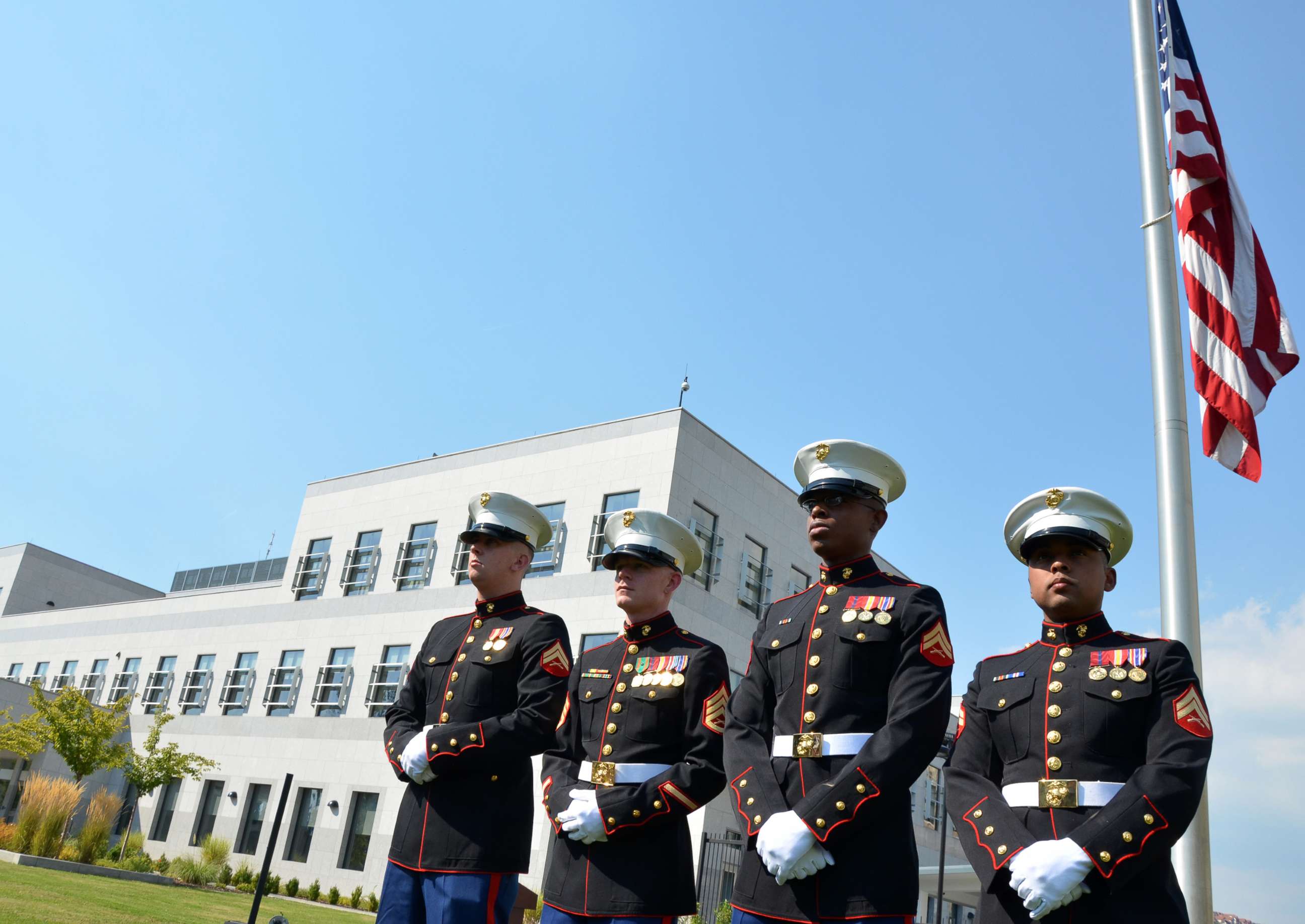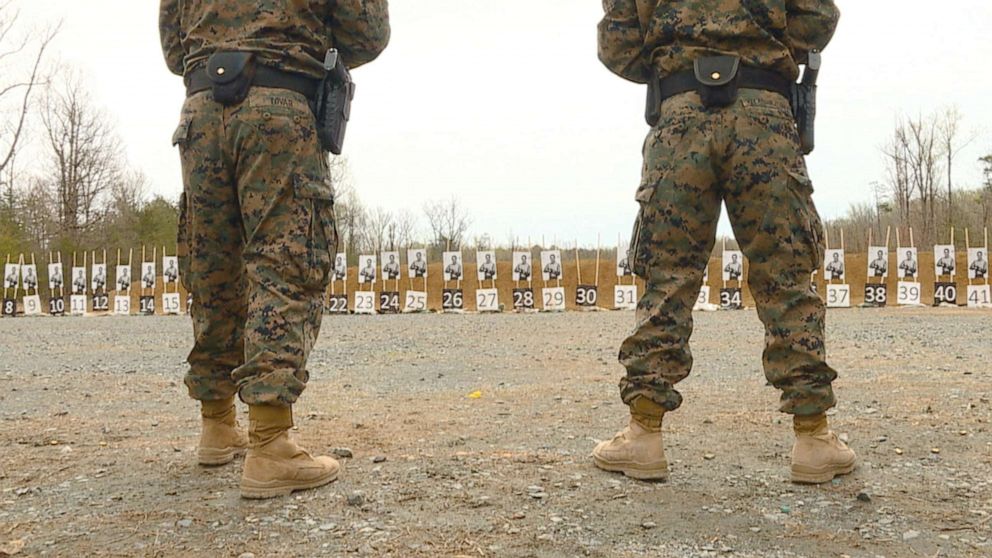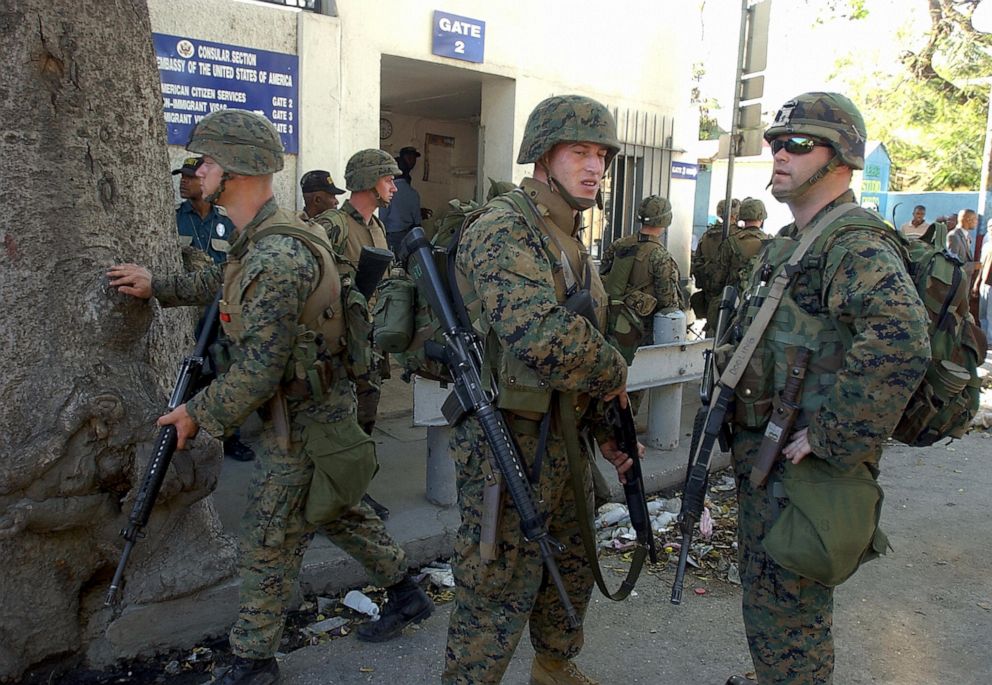An inside look at the training for Marines who protect US embassies
The Marine Corps Embassy Security Group protects U.S. diplomatic facilities
If you visit a U.S. embassy anywhere around the world, chances are that one of the first people you would see is a U.S. Marine.
Those Marines have been specially selected and trained by the Marine Corps Embassy Security Group at their headquarters in Quantico, Virginia.
"The Marine embassy security group provides uniformed diplomatic security in 150 different countries, so 181 separate diplomatic facilities in those 150 countries embassies and consulates," Sgt. Major Steven Burkett, MCESG, told ABC News. "Our mission is to protect personnel and to protect classified material."

Marines selected to participate in the program receive eight weeks of training in preparation for three separate 12-month overseas tours.
"We do have some of the best and brightest Marines out on this program," said Gunnery Sgt. Charlie Hardesty, an MCESG instructor and adviser.
And, unlike the rest of the Marine Corps, these Marines report to the State Department.
"We fall under the ambassador at whichever embassy that we are stationed at," Hardesty said. "That is our operational chain of command."

"We're not going out looking for a fight," Hardesty added. "We're looking to defend that embassy or that consulate."
ESG Marines are trained for any response and call on some of the weapons training and threat response training they received at Quantico.
"When things go wrong people again look to the Marines to solve the problem no matter what it is whether it's within their assigned mission or not," Burkett added.
And that includes specific training at MCESG to prepare for the possibility Marines may be called on to locate an intruder who has breached the tight, layered security at U.S. diplomatic compounds overseas.
"It's probably one of the most practiced drills that we do," said Staff Sgt. Christopher Hart, Marine Security Group Augmentation Unit.

Marines also receive specialized training. For example, using lessons learned from the deadly 1998 al-Qaeda bombing at the U.S. embassy in Nairobi, Kenya, the Marines learn how to survive a collapsed structure. In the 1998 incident, embassy Marines escaped the wreckage and then provided security and assisted injured embassy staffers.
At Quantico, Marines wind their way through tight crawlspaces created in shipping containers to replicate collapsed floors and debris.
"They are completely blacked out. They can't see anything," said Chief Warrant Officer 3 Charles Villalobos. "They have gloves on to kind of disorient them, as well to protect their hands."
"And they'll crawl through looking for different openings that they can fit through," said Villalobos. "There's one way in, and there’s one way out."




